#swallowtail butterfly 1996
Explore tagged Tumblr posts
Text

#スワロウテイル#suwarôteiru#suwarouteiru#yentown#swallowtail butterfly 1996#swallowtail butterfly#shunji iwai#iwai shunji#岩井俊二#chara#ちゃら#cinema#japanese#asian#stills#my uploads#music#experimental cinema#ageha#揚羽
8 notes
·
View notes
Text




Swallowtail Butterfly (1996), dir. Shunji Iwai
192 notes
·
View notes
Text
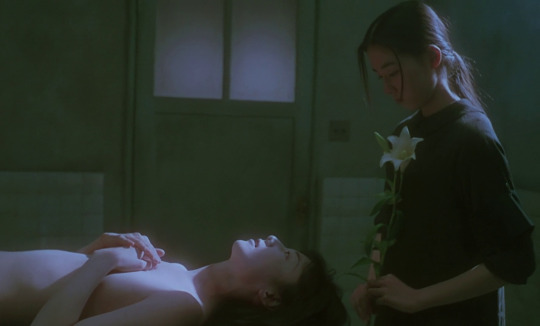
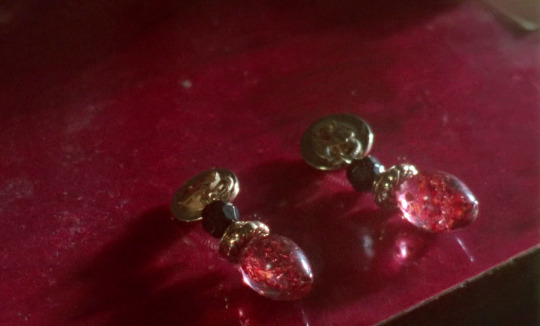
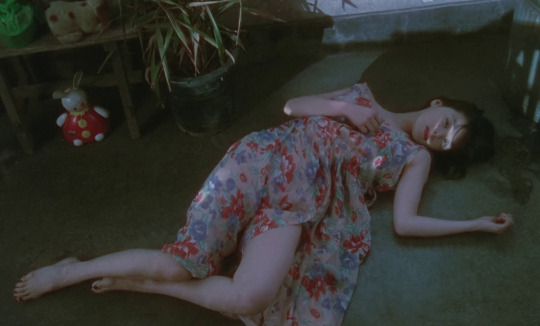
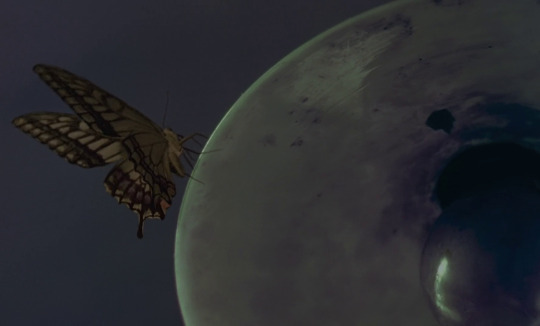

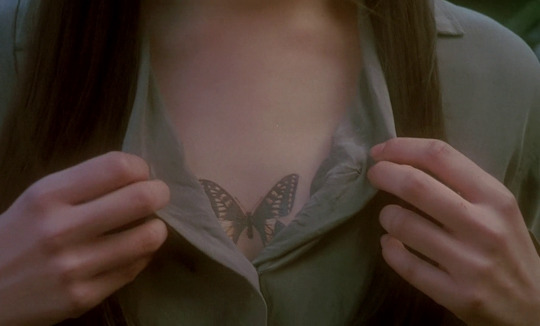
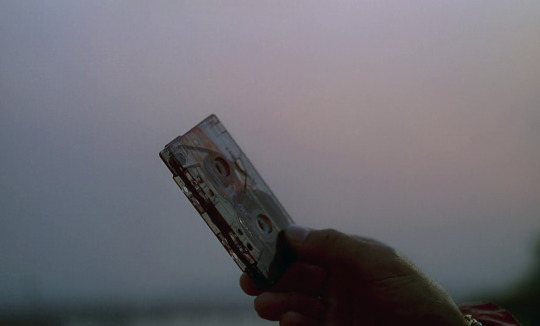
Swallowtail Butterfly (1996) dir. Shunji Iwai
210 notes
·
View notes
Text
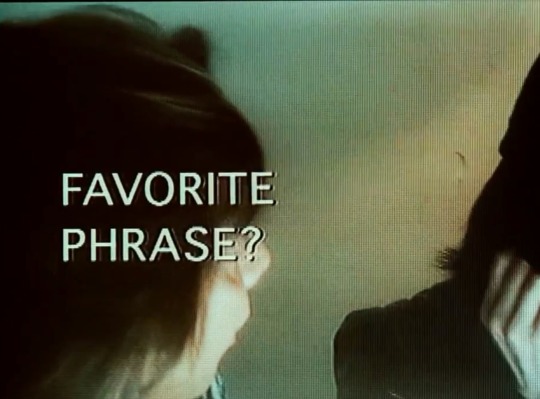
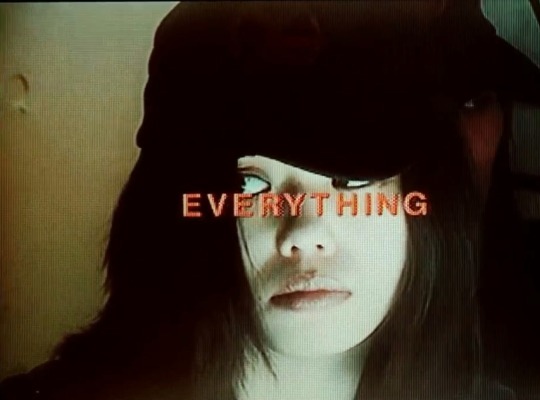
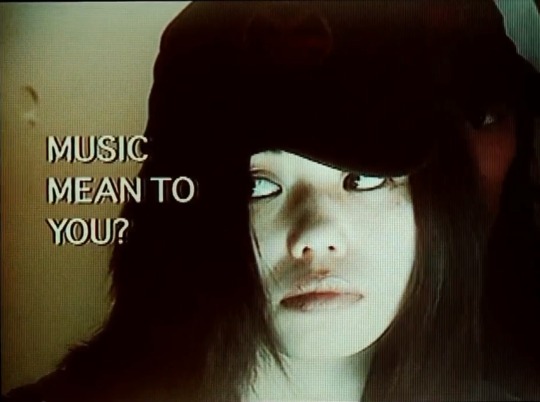

Swallowtail Butterfly (1996) dir. Shunji Iwai
#swallowtail butterfly#shunji iwai movies#shunji iwai#shunji iwai swallowtail butterfly#chara#ayumi ito#suwaroteiru#cinematography#movies#cinema#movies to watch#world cinema#movie quotes#cult cinema#independent movies#underrated movies#cinephile#japanese cinema#asian movies#asian cinema#imdb#letterboxd
178 notes
·
View notes
Text
Swallowtail Butterfly (1996)
I really don't know. I might have some ideas. But whether or not any of them are up to scrutiny is a whole other matter. Shunji Iwai's Swallowtail Butterfly is a coming of age story, sometimes it's a Hong Kong gangster movie, and there are other times where I frankly don't know what it was exactly that I watched. Something I can say for certain is that if I had to pin any particular theme that was consistent throughout Swallowtail Butterfly it was fluidity.

Swallowtail Butterfly throughout most of its narrative follows Ageha, a young girl residing in a non-descript immigrant shanty town occupied prominently by Chinese settlers at the edge of non-descript urban Japan. This general non-descript quality is a common element in Swallowtail Butterfly. After being orphaned Ageha is left in the care of Glico, a Chinese prostitute as she and their many friends find ways to survive in Yentown.
Yentown roughly encompasses the boundaries of urban Japan and is a space where immigrants from all over the world have come to stake their claim, collect enough yen, and to return home. Aside from the non-descriptness of place Swallowtail Butterfly also does quite a bit to play with the non-descriptness of race and identity.

After a series of absurd adventures that involves desecrating a grave in a potter's field, searching the contents of a human stomach, and using a Frank Sinatra cassette to run a counterfeiting scam Ageha, Glico, and their friends open the YenTown Club. It's during this time that Glico gains the attention of record company executives for her singing talent.
During an interview with a fairly prominent record label the executives present are discussing the marketability of Glico as Chinese and decide that it would be too difficult and instead ask her if she would become Japanese. This is where the fluidity of Swallowtail Butterfly and what it has to say about race and especially about being Japanese is the most identifiable. Glico's popularity is predicated on her ability to present herself as Japanese. Not only is being Japanese something which can be marketed and commodified but also something which is not so strictly defined by essentialized ideas of homogeneity.

There are certainly other times in the film where these grander ideals surrounding homogeneity are challenged such as with the band consisting of Japanese born individuals of non-Japanese descent who's cultural upbringing and only language seems to be almost exclusively. Are these individuals not Japanese?

This really was not a film for me. I didn't necessarily find it bad. The counterfeiting scheme in general was one of my favorite plot points of Swallowtail Butterfly, unfortunately from there things branched off into places that just weren't very interesting to me. One of my favorite aspects of the film though was the setting of "Yentown", and it's "city at the edge of the world" quality and the ways in which each character had seemingly drifted into there and the stories they brought with them and their struggles. It, and especially the underworld crime portion, reminded me quite a bit of Roanapur, a fictional South East Asian island that acts as setting for the manga Black Lagoon.

2 notes
·
View notes
Text






Swallowtail Butterfly (1996)
4 notes
·
View notes
Text
Butterfly Diversity and Abundance Around Rabindra Sarobar, Kolkata: A Field Report

Abstract
Butterflies are considered indicator species for conservation planning and environmental monitoring as their diversity and abundance are visibly affected by anthropogenic activities. In this study, the diversity and abundance of butterfly fauna in the surrounding vegetation of Rabindra Sarobar, Kolkata, India was assessed to provide baseline information on the size of species richness and prospective utilization in urban planning and conservation. A total of 64 butterfly species under 5 families and 44 genera were recorded over a period of ten months from June 2023 to March 2024. Family Nymphalidae (36.85% of population) was found dominant with 17 genera and 26 species, followed by Lycaenidae (30.72%, 11genera, 12 species), Pieridae (22.77%, 9 genera, 12 species), Papilionidae (7.01%, 3 genera, 9 species) and Hesperiidae (2.65%, 4 genera, 5 species). Eleven species were found legally protected under different Schedules of the Wildlife Protection Act, 1972. Values of different diversity indices such as Shannon’s index (H’=3.69), Pielou’s evenness index (J’=0.89) and Simpson’s index (Ds=0.03) showed a high diversity, evenly distribution and high abundance persisted in the butterfly community. Information from this preliminary study is expected to be useful toward the conservation of the habitat as well as the butterfly fauna in the study area and similar geographic areas.

Introduction
Monitoring biological diversity is becoming an essential tool to estimate the alteration of the environmental quality at the local as well as regional scale. Studies on species diversity and abundance are the prior required element to quantify the environmental impact on biota and any prior species diversity investigations are a prerequisite to adopting habitat management strategies (Nichols and Williams, 2006). Appraisal of taxa-specific species richness capacitates a more realistic and accurate assessment of the ecosystem functions and services derived from the specified taxon (Diaz et al., 2006). Diversity analysis of a single taxon or restricted number of taxa is worthwhile as their presence or absence and abundance records are useful for the population size estimation (Williams et al., 2002; Koleff et al., 2003; MacKenzie, 2005) whereas resource limitation impedes the selection of several taxa or the whole community (Mihindukulasooriya et al., 2014). The diversity of a target taxon varies with the features of the landscapes, more precisely with the nature and quality of the habitat and climatic conditions (Boggs, 1986). Butterflies are one of the best-known insects for their variety, presence in all types of environments, the beauty of their wing colouration and patterns and also for their role as effective ecological indicators of terrestrial ecosystems (Venkataramana, 2010). Hence, butterflies are the potential taxa, chosen for the estimation of biodiversity essential for biological conservation and also for monitoring the environmental conditions (Simonson et al., 2001). Any certain change in environmental quality is readily assessed by the change in their diversity, abundance or sometimes local extinction (Hogsden and Hutchinson, 2004). Moreover, butterflies provide several ecological services which are essential for the sustenance of environmental quality and integrity (Kumar, 2013).
Worldwide, over 19,000 butterfly species have been recorded (Kunte, 2000), of which from India, around 1500 species are documented, including 107 swallowtail butterflies (Papilionidae), 521 brushfooted butterflies (Nymphalidae), 109 white and yellow butterflies (Pieridae), 443 small blue butterflies (Lycaenidae) and 321 skippers (Hesperiidae) (Gaonkar, 1996; Kunte, 1997). Diversity and abundance of butterfly species decline day by day with the increase of urban elements like roads, buildings and other concrete constructions and with the expansion of residential, industrial and commercial areas, associated with the depletion of the quantity and quality of natural habitat, habitat degradation or disruption and fragmentation which adversely affects the natural biodiversity of that area (Clark et al., 2007; Malagrino et al., 2008). Urbanization, pollution, excessive usage of fumigant pesticides etc. provide a negative impact on butterfly populations (Pollard and Yates, 1993). Several earlier studies reported the impact of urban development on butterfly fauna, and their richness and abundance in Kolkata and its adjoining areas (Moore, 1882; Niceville, 1885; Ghosh and Siddique, 2005; Ghosh, 2009; Ghosh, 2010; Chowdhury and Chowdhury, 2007; Chowdhury and Das, 2007; Chowdhury and Soren, 2011; Basu Roy, 2011; Biswas et al., 2012; Nair et al., 2014; Biswas et al., 2014; Mukherjee et al., 2016; Maity et al., 2016; Bhattacharya et al., 2018; Mitra et al., 2023). For continuous monitoring of the environmental condition of Kolkata, systematic surveys on butterfly fauna from different regions of Kolkata are essential.
Keeping this view in mind, the present study was undertaken to document the diversity and abundance of butterfly fauna in the surrounding vegetation of Rabindra Sarobar, Kolkata, West Bengal, India, to provide necessary information on the conservation management of habitat and butterflies for sustaining ecosystem services.
Source : Butterfly Diversity and Abundance Around Rabindra Sarobar, Kolkata: A Field Report I InformativeBD
1 note
·
View note
Text
Miwa Watabiki

Miwa Watabiki (綿引美和, Watabiki Miwa) (kelahiran 13 Januari 1968), yang lebih dikenal dengan nama panggungnya Chara, adalah seorang penyanyi-penulis lagu, aktris dan joki video Jepang. Ia melakukan debuat pada 1991 dengan singel Heaven. Ia paling dikenal karena lagunya "Swallowtail Butterfly (Ai no Uta)", lagu tema untuk film Shunji Iwai 1996 Swallowtail Butterfly (yang ia bintangi), singel hit 1997-nya "Yasashii Kimochi", dan kolaborasinya dengan vokalis Judy and Mary Yuki, "Ai no Hi Mittsu Orange
0 notes
Text
Swallowtail Butterfly - 1996

Swallowtail Butterfly, by Shunji Iwai, is an excellent movie. The film contains a great mixture of action and character building scenes, as well as constructing a deep and interesting world for the story to take place in. The film often had me on the edge of my seat, and had many moments that had me laughing or anxious. This film is easily one of my favorites that I have watched this year, and for that reason I am very excited to talk about it.
The film follows a young girl named Ageha’s life as she experiences ups and downs living in a near-future Japan. At the start of the film, Ageha doesn’t have anything, not even a name. By chance, she ends up being adopted by a prostitute named Glico, and from there her life quickly spirals into unknown territory.
Despite being set in a fictional futuristic Japan, the film has some interesting commentary on living as an immigrant, especially a 2nd generation immigrant. The ‘Yentowns’ are people who rush to Japan with nothing to their name in the pursuit of wealth and in the process end up struggling to make end’s meet. Throughout the film we see Yentowns being forced to profit off of prostitution, crime, scamming, exploitation, etc. Although, there are many more Yentowns who are unable to even profit using those means, such as those in the Opium Street. The name of the people themselves, ‘Yentowns,’ is very clever wordplay. By naming the country and the group the same names, the film is implying that they ARE the city. This sentiment is reiterated later in the film when Fei Hong is being interrogated by the police.
This isn’t directly related to the overall meaning of the film, but I was genuinely shocked by the use of ‘My Way’ by Frank Sinatra as a key plot point. I love that song and occasionally listen to it, so I immediately recognized it when it was played in the film. The song’s overall message of blazing your own path and living with no regrets is visible in many of the character’s arcs, but most closely ties in with Fei Hong and Ageha. Ageha is repeatedly associated with the imagery of a butterfly, occasionally a squashed butterfly. This reflects her life as a 2nd generation immigrant with nothing left to her name, as in a fragile time in her life, she was left with nothing. In that sense, she was robbed of her freedom, much like the butterfly lost its ability to fly. In addition, Despite being born in Japan and growing up in the country her entire life, she is treated like an outsider and discriminated against. In this way, Ageha’s character arc mimics the struggle that many 2nd generation immigrants go through, often feeling like they have no place to call home. In the end, Ageha regains her freedom due to the support of those around her and finds great success in the country.
1 note
·
View note
Text
on Swallowtail Butterfly - Shunji Iwai (1996)
Initial Thoughts
This movie was a wild ride from start to finish. Not gonna lie, it was definitely pretty hard for me to follow, particularly because of the film's "free-flowing" structure and the abundance of characters and settings. The overall style was immensely captivating, I felt totally entranced throughout the viewing by the creative handheld camerawork, impressive set and costume designs, and the unique worldbuilding. There's also obviously an emphasis on multiculturalism, creative expression, and relentless aspiration, which are all very cool and good things in my book, so vibe-wise I was totally on board with this one, but nonetheless my dumb baby brain kinda struggled to fit the pieces together and consistently follow the narrative, so my enjoyment of the film was a bit muddied as a result.
Further Critique
The main thing I appreciated about this film was its multifaceted portrayal of poor immigrants. On one hand, their actions could be viewed as greedy and opportunistic, concocting schemes to rob innocent businessmen, but on the other, they could be seen simple attempts at managing to get by with what they can get their hands on in what appears to be an unstable global economy. Their DIY scrapyard village was also quite the sight to behold, it seemed like quite the nice community hub despite its dirty appearance and desolate surroundings. Speaking of which, the set design and overall visual presentation of this film was crazy unique and impressive. A scene that particularly comes to mind is the one in Archer's appartment (?). The room had this dark, dingy vibe with static on the TV and lights flashing through the windows, creating this oddly tense yet comfortable feeling space, which coupled with the rain pouring down the windows and the shaky camera almost felt like being on a boat in the middle of a storm. Just about every other shot in the film had a similarly unique and evidently meticulously crafted composition to it that just made the whole experience endlessly visually appealing, helping to counteract its relatively long runtime.
The most interesting thematic element in the film is of course the symbolism of the swallowtail butterfly, which is generally said to represent endurance, hope, and change. I'm not entirely sure how to read the use of the butterfly as a symbol in the film, as there are several potential interpretations, but to me it felt like it hinted in some way to the fleeting nature of life. You could say that the caterpillar on Ageha's chest becoming a butterfly by the end of the film reflects her newfound acceptance of her Yentown-tied identity and her subsequent growth as a result of that change, but I think there are a couple other instances of the butterfly being used in the film that take its meaning a step further. Fei Hong recalling the flying Yentown band ad just before his death, as well as the flashback scene where baby Ageha accidentally squashes the butterfly in the window, could be read as symbolizing how no matter how graciously one flies, or to what heights one reaches, the fragility of one's successes in life is comparable to that of a butterfly at the mercy of the wind.
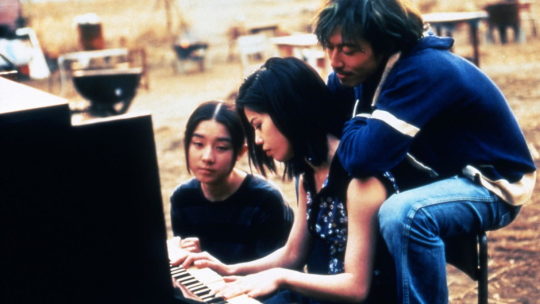
Overall, an extremely unique and interesting film with a lot more to dig into. I'm a bit disappointed I couldn't find any video essays discussing this as I feel like it's quite ripe with things to talk about. Solid 7/10
0 notes
Text
Swallowtail Butterfly by Shunji Iwai
Released in 1996, “Swallowtail Butterfly" is a film directed by Shunji Iwai. It depicts the story of the residents of Yentown (円都), the city of the yen when the yen was the strongest currency in the world. They are scorned by society as thieves of yen, labeled as Yentown (円盗). The film is notable for its blend of Japanese, English, and Chinese, with sporadic use of foreign-accented Japanese, which adds to its unique charm. What stood out the most was the beautifully crafted world created by people from various backgrounds. It is quite profound to watch a film now, at the same age as my mother was when she watched it in the cinema. I was thrilled to see Chara who was a popular singer at that time and renowned actors like Atsuro Watabe (incredibly cool) appearing as main characters. Chara's distinctive voice and aura seemed to complement the film perfectly.
One of the most memorable aspects of this film is its exploration of identity. There is a poignant scene where the man, born and raised in Japan to American parents, unable to speak English, expressed the feeling of having no place to belong, both for himself and for second-generation Yentown residents like Ageha. The scene where Yentown residents, having obtained money and possessions, return to their hometowns, seems to affirm his plea that many Yentown come only to earn yen and do have hometowns. Also, the scene where Glico is suggested to become Japanese to become a successful singer in Japan, coupled with the aforementioned scene, made me ponder on the concept of being "Japanese.” Ageha and the man with American parents, may not be ethnically Japanese. However, I think that people who have been born and raised in Japan and consider themselves Japanese are Japanese. Japan is perceived as a society consisting of a single ethnicity, with the notion of Japanese people being one ethnic group being unconsciously shared. The film prompts viewers to rethink this concept.
In the film, Glico hums a phrase from Teresa Teng's famous song, and in a subsequent dialogue, her name is mentioned as one of the few foreign singers who became successful in Japan. I couldn't help but wonder if this hinted at Glico's admiration for her, as a foreign singer. Instead of looking down or alienating someone because they are different, it is essential to acknowledge and understand each other. Ageha's gradual ability to speak Chinese, despite initially not understanding it at all, signifies not only her personal growth but also effectively conveys such a message. One should accept people as they are, and individuals should take pride in themselves. The scene where everyone returns to Yentown at the end and burns the yen obtained through illegal means seems to demonstrate their pride in Yentown and identity.
The tattoo of Glico's swallowtail butterfly also symbolizes the same. For those living illegally in Japan and residing in Yentown, there is almost no freedom to assert their names or identities. Her identity is represented by the swallowtail butterfly engraved on her chest, which embodies herself. Similarly, Ageha, having established her own identity, a caterpillar transforms into a butterfly represented by the swallowtail tattoo. Such a precious and significant scene depicts the colorful world seen from the butterfly's perspective, intertwined with music and light, creating a beautiful portrayal. The transformation of the crushed butterfly wing from Ageha's childhood into a beautiful tattoo was also a lovely touch.
However, to be honest I can also understand why Yentown is frowned upon. Their methods are quite dirty, using counterfeit money to obtain large amounts of cash, puncturing tires for business and stealing gasoline ( a Japanese driver subtly but clearly depicts impression and responds to them, by wiping the mouth of a provided beverage,) and jumping out in front of a car and forcibly washing it to demand money. Their actions are deceptive, but it is also understandable given the environment they live in. Therefore, it is not fair to solely blame them and violence or torture are entirely unacceptable.
Moreover, the sadness of Fei Hong, who falls in love with Glico, is heartbreaking. Despite being attracted to Glico and setting up a live house to fulfill her dream, he ends up detained after being reported to immigration authorities, and, upon finally being released, he is misunderstood by people and arrested again without the chance to see her once more, eventually dying alone in police custody. As he passes away, memories flash before him, and it is revealed that what he saw in the middle of the road when he felt free was a billboard of a butterfly, making me feel incredibly sad, as if implying that the butterfly—Glico—has flown away from him. He passes away while singing "My Way" all night, consumed by thoughts of her. It is tragic to see such a kind person continuously fall into despair.
Additionally, other impressive elements include: ・The opening and ending sequences start with English narration and text. ・The frequent use of red in cars, clothing, flames, blood, etc. ・The subtle direction indicating Ageha's love for Fei Hong, such as her checking her appearance in the mirror before meeting him, changes in her clothing and lunchbox, and her improved proficiency in Chinese. ・The intense atmosphere in the market is heightened by music, lighting, and first-person perspective camera work. ・The depiction of the spinning car scenes from aerial, in-car, and close-up perspectives, intensifies the impressiveness. ・Innovative camera work capturing the characters from the perspective of a crane truck. ・The scenes featuring Sudo, Glico, and Ageha, where the volume of the music changes according to the situation.

1 note
·
View note
Text
Date: 2022/06/08
Films: Ritual (2000) / Ghost Soup (1992) / Chang-ok's Letter (2016) / Swallowtail Butterfly (1996)
Colors: Light Purple / Light Red / Purple-Blue / Deep Red
Occurrence: Directed by Hideaki Anno (starring Shunji Iwai in an acting role) / Directed by Shunji Iwai / Directed by Shunji Iwai / Directed by Shunji Iwai

Letterboxd Activity Color Scheme Thread
Letterboxd Activity row can produce nice color coordinations from posters, usually by accident. This post documents instances of color schemes appearing in my account's Activity row.
Date: 2022/01/29
Films: Marie Antoinette (2006) / The Candidate (1972) / 10 Things I Hate About You (1999) / Richard III (1995)
Colors: Pink, Blue, and light crene / Red, Black, White, Blue with light pink / Pink and Blue on White / Red and Black

31 notes
·
View notes
Photo

Swallowtail Butterfly, Shunji Iwai
#swallowtail butterfly#shunji iwai#1996#1990s#90s#japan#japanese#digital#text#film#movie#cinema#cinematography#screencaps#stills
44 notes
·
View notes
Text
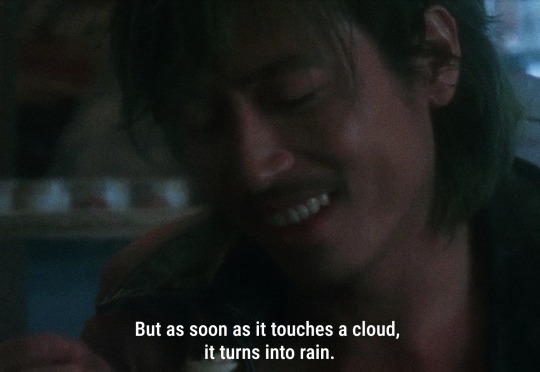


Swallowtail Butterfly (1996) dir. Shunji Iwai
#shunji iwai swallowtail butterfly#swallowtail butterfly#shunji iwai movies#shunji iwai#cinematography#movies#asian movies#asian cinema#cinema#movies to watch#world cinema#movie quotes#cult cinema#independent movies#underrated movies#cinephile#letterboxd#imdb
139 notes
·
View notes
Photo

Swallowtail Butterfly (1996)
8 notes
·
View notes